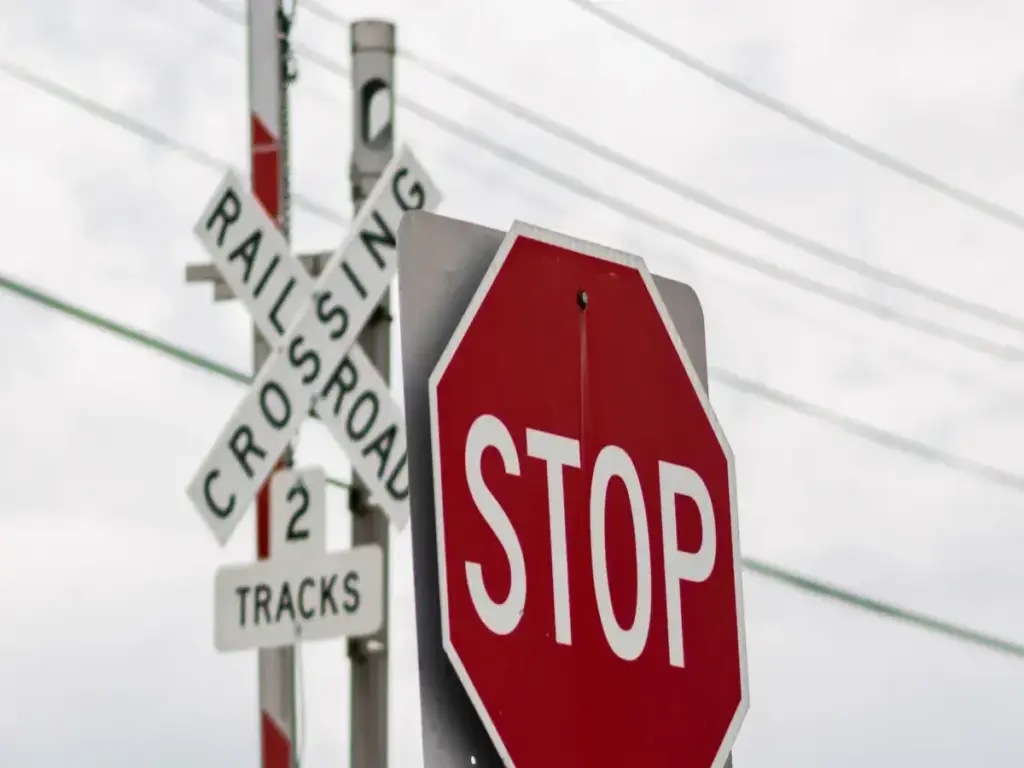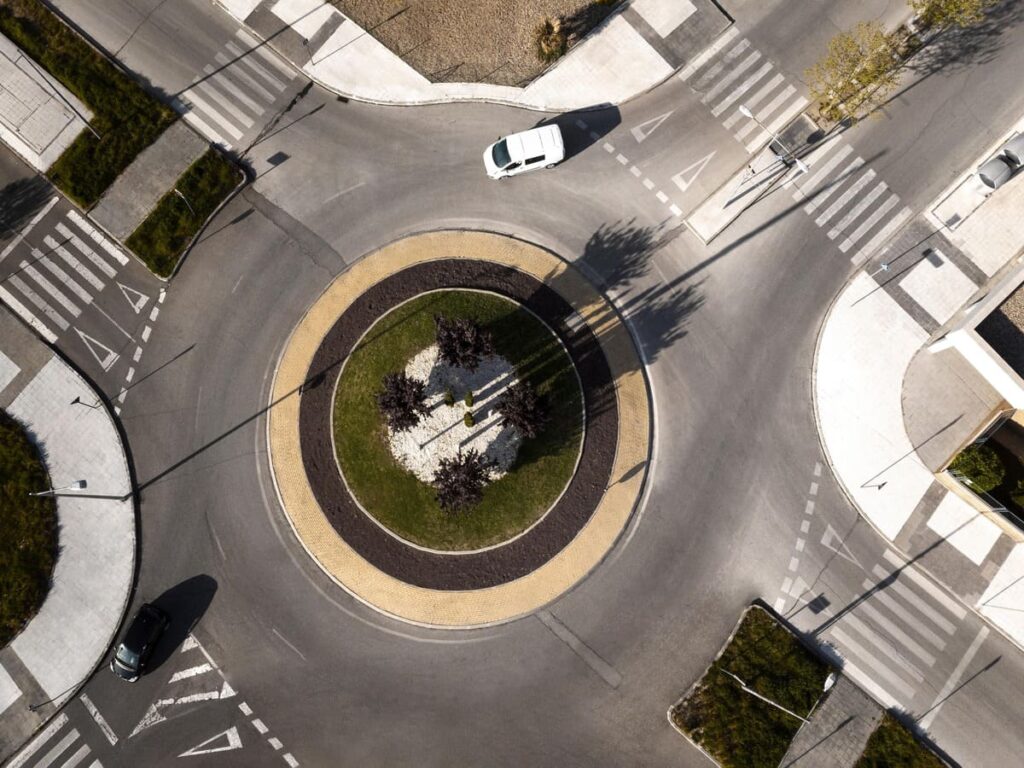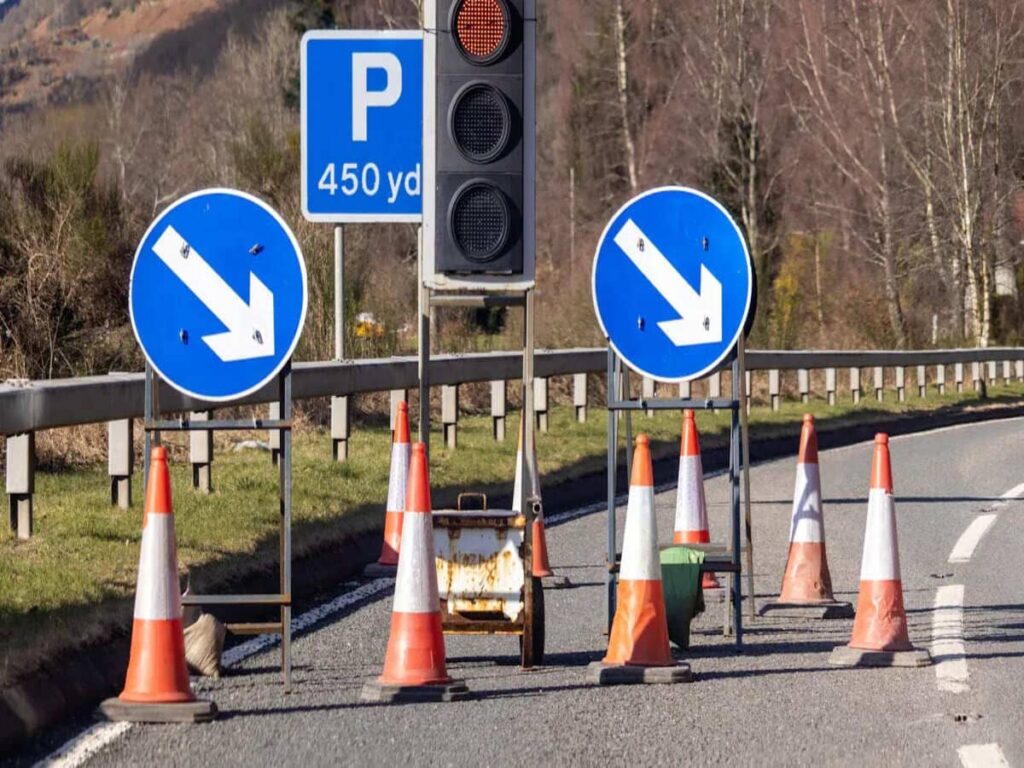
El Manual en dispositivos de control de tráfico uniformes (Muescato) Sección 3B.11 Desempeña un papel vital en la regulación de los marcadores de pavimento reflectantes elevados.. Estos marcadores mejoran la visibilidad y mejoran la seguridad del tráfico al guiar a los conductores, especialmente de noche o durante el clima adverso. Los estudios muestran que los marcadores de pavimento reflexivo pueden reducir los accidentes nocturnos hasta 30%, ya que permanecen muy visibles incluso bajo lluvia o polvo. Color constante a través de los marcadores asegura que los conductores puedan reconocer rápidamente los límites del carril y las curvas de carreteras, Reducción de riesgos. Uniformidad en dispositivos de control de tráfico, incluyendo colores, mejora la eficiencia de los sistemas de transporte y mejora la seguridad general.
Al comprender y cumplir estos requisitos, OPTsigns garantiza que sus productos proporcionen información clara, Guía confiable para conductores., especialmente en situaciones críticas de baja visibilidad. OPTsigns se compromete a respaldar tanto los estándares de la industria como las necesidades de los clientes., proporcionando alta calidad marcadores de pavimento elevados que son tan eficaces como esenciales para la seguridad vial.
Control de llave
- Los marcadores de carretera elevados ayudan a los conductores a ver mejor y reducir los accidentes al 30%.
- Los mismos colores de marcador permiten a los conductores detectar fácilmente carriles y bordes, Hacer caminos más seguros.
- Materiales especiales como pequeñas cuentas de vidrio hacen que los marcadores brillen en la oscuridad..
- La luz del sol y el clima pueden debilitar los marcadores, pero los nuevos recubrimientos los mantienen claros.
- Seguir las reglas de MUTCD mantiene los marcadores útiles y protege a los administradores de carreteras de los riesgos..
La ciencia de los marcadores de pavimento reflectantes elevados

Materiales y diseño
Materiales comunes utilizados en marcadores de pavimento reflectantes elevados.
Los materiales utilizados en las señales de pavimento reflectantes elevadas se seleccionan cuidadosamente para satisfacer las demandas de las diferentes condiciones de la carretera.. Aquí hay un desglose de los materiales más comunes y sus aplicaciones.:
| Material | Características | Caso de uso |
|---|---|---|
| Cerámico | Alta durabilidad | Zonas de mucho tráfico |
| Plástico | Ligero | Uso temporal o poco tráfico |
| Metal | Resistente a la nieve | Áreas con fuertes nevadas o arados |
| Táctil | Proporciona retroalimentación | Ayuda a los conductores con discapacidad visual |
Cada material ofrece beneficios únicos. Por ejemplo, Los marcadores cerámicos resisten un desgaste intenso., mientras que los marcadores de metal resisten el daño de los quitanieves. Los marcadores de plástico son ideales para instalaciones temporales debido a su naturaleza liviana..
Cómo las características de diseño mejoran la durabilidad y la visibilidad
El diseño de las señales de pavimento reflectantes elevadas desempeña un papel fundamental en su eficacia.. Materiales duraderos como cerámico y el metal garantizan que los marcadores puedan soportar condiciones duras, como tráfico intenso o condiciones climáticas extremas. La visibilidad mejora mediante la integración de elementos retrorreflectantes., como cuentas de vidrio o láminas prismáticas. Estas características hacen que los marcadores parezcan más brillantes cuando los iluminan los faros., ayudarle a navegar por las carreteras de forma segura durante la noche o con mal tiempo.
Propiedades reflectantes
El papel de los materiales retrorreflectantes como las perlas de vidrio y las láminas microprismáticas
Los materiales retrorreflectantes son esenciales para mejorar la visibilidad.. Funcionan reflejando la luz hacia su fuente., hacer que los marcadores sean muy visibles para los conductores. Estas son algunas de las características clave de estos materiales.:
- Las láminas microprismáticas proporcionan mayor brillo y reflectividad en comparación con las perlas de vidrio..
- Es duradero y resistente al desgaste ambiental., haciéndolo adecuado para uso al aire libre.
- Las cuentas de vidrio reflejan la luz. en todas las direcciones debido a su suave, superficies redondeadas.
- Las láminas microprismáticas enfocan el reflejo de la luz, mejorar la visibilidad en la dirección de los vehículos que se aproximan.
Estas propiedades garantizan que los marcadores de pavimento reflectantes elevados sigan siendo efectivos en condiciones de poca luz., guiándote de forma segura por el camino.
Cómo el reflejo de la luz mejora la visibilidad nocturna
Los materiales reflectantes mejoran la visibilidad nocturna mediante la utilización de retrorreflexión.. Este efecto óptico dirige la luz de los faros del vehículo hacia el conductor., hacer que las marcas y marcadores viales sean más fáciles de ver. Las cuentas de vidrio incrustadas o las láminas prismáticas de estos marcadores mejoran su brillo., incluso en condiciones difíciles como lluvia o niebla. Esta mayor visibilidad le ayuda a reaccionar más rápido a los diseños de las carreteras., reducir el riesgo de accidentes y mejorar la seguridad del tráfico.
Importancia de la consistencia del color en los marcadores de pavimento reflectantes elevados
El papel del color en la seguridad vial
Cómo el color ayuda a los conductores a identificar los carriles, límites, y direcciones de caminos
El color juega un papel crucial para ayudarle a navegar por las carreteras de forma segura. Los marcadores de pavimento reflectantes elevados utilizan colores específicos para definir los carriles, límites, y direcciones de caminos. Estos marcadores mejoran la visibilidad., Especialmente por la noche, cuando las líneas pintadas tradicionales pueden desvanecerse u oscurecerse. Sus materiales reflectantes aseguran que puedas verlos desde la distancia., manteniéndote al tanto de los límites de los carriles y las curvas de la carretera.
- Los pernos LED de iluminación blanca hacen que las curvas parezcan menos riesgosas y más agradables para los conductores.
- Los conductores ajustan sus trayectorias hacia el centro de la carretera al acercarse a curvas marcadas con luces blancas., mejorar la identificación del carril.
Proporcionando señales visuales claras, Estos marcadores contribuyen significativamente a la seguridad del tráfico., reduciendo la confusión y ayudándole a mantener el rumbo.
El impacto psicológico y cognitivo del color constante en los tiempos de reacción del conductor
El color uniforme también influye en cómo percibe y reacciona ante las condiciones de la carretera.. Un estudio encontró que las curvas marcadas con postes LED blancos parecían menos riesgosas y más agradables en comparación con las curvas rojas o sin iluminación.. Esta consistencia en el color impacta positivamente en tu percepción., hacer que las condiciones de conducción desafiantes se sientan menos estresantes. También puede mejorar tus tiempos de reacción., ya que las señales visuales claras y predecibles le permiten procesar la información más rápido. Este efecto psicológico mejora la seguridad general al ayudarle a tomar decisiones más rápidas en la carretera..
Lograr y mantener la consistencia del color
Uso de pigmentos y recubrimientos para asegurar un color uniforme.
Los fabricantes utilizan pigmentos de alta calidad y recubrimientos duraderos para mantener un color uniforme en los marcadores de pavimento reflectantes elevados.. Estos recubrimientos resisten el desgaste, Garantizar que los marcadores conserven su visibilidad a lo largo del tiempo.. Las tecnologías avanzadas en la aplicación de pigmentos crean colores vibrantes y consistentes que siguen siendo efectivos en diversas condiciones de iluminación.. Esta uniformidad le ayuda a reconocer rápidamente las marcas viales., mejorar la seguridad del tráfico.
Factores ambientales que afectan la consistencia del color. (P.EJ., Exposición a los rayos UV, clima)
Las condiciones ambientales pueden afectar la consistencia del color de los marcadores de pavimento.. La exposición a los rayos UV provoca decoloración, mientras que las fuertes nevadas provocan abrasión. Condiciones de aplicación, como la temperatura y la humedad, También afecta la durabilidad de las marcas.. Por ejemplo:
- Las altas temperaturas y la humedad de la superficie durante la instalación pueden reducir la longevidad del color..
- Cambios climáticos durante todo el año, incluyendo viento y lluvia, Influir en el rendimiento de los marcadores..
A pesar de estos desafíos, Los avances en materiales y recubrimientos ayudan a mantener los marcadores.’ visibilidad y eficacia, garantizando su seguridad en la carretera.
MUTCD Sección 3B.11 Directrices para marcadores de pavimento reflectantes elevados

Requisitos clave
Hacer coincidir los colores de los marcadores con las marcas viales (P.EJ., blanco, amarillo, rojo)
MUTCD Sección 3B.11 enfatiza la importancia de hacer coincidir los colores de los marcadores con las marcas viales para garantizar la coherencia y mejorar la visibilidad.. Notarás que los marcadores blancos generalmente indican separaciones de carriles en la misma dirección., mientras que los marcadores amarillos resaltan los carriles de tráfico opuestos o las zonas de prohibido rebasar. Los marcadores rojos a menudo señalan áreas donde está prohibida la entrada., como carriles en sentido contrario. Esta alineación entre los colores de los marcadores y las marcas viales le ayuda a interpretar rápidamente los diseños de las carreteras., mejorar la seguridad del tráfico.
Normas para diferentes colores de marcadores y sus aplicaciones.
Cada color de marcador tiene un propósito específico., y los estándares MUTCD aseguran su correcta aplicación. Por ejemplo:
- Los marcadores fluorescentes amarillos y amarillo-verdes cumplen con los niveles de retrorreflectividad de las señales amarillas., haciéndolos ideales para zonas de advertencia.
- Los marcadores naranjas fluorescentes se alinean con la retrorreflectividad de los letreros naranjas, A menudo se utiliza en áreas de construcción..
- Los marcadores blanco sobre rojo y los marcadores rojo sobre blanco siguen un tratamiento similar a menos que se especifique lo contrario..
Marcadores como azul y marrón., aunque no está cubierto explícitamente en las normas, Las agencias todavía pueden monitorear la retrorreflectividad.. Estos estándares garantizan que los marcadores de pavimento reflectantes elevados funcionen de manera efectiva en diversas condiciones de la carretera..
Cumplimiento y aplicación
Cómo las agencias garantizan el cumplimiento de los estándares MUTCD
Las agencias desempeñan un papel fundamental en el mantenimiento del cumplimiento de los estándares MUTCD. Establecen plazos de cumplimiento para garantizar el marcaje en el pavimento, incluyendo sistemas reflectantes de señalización vial, cumplir con los requisitos de retrorreflectividad. Un período de cumplimiento sugerido de cuatro años permite a las agencias implementar métodos para mantener el desempeño del marcador.. Las agencias también establecen cronogramas para reemplazar los marcadores deficientes según los recursos y las prioridades disponibles.. Estas medidas garantizan que las señales reflectantes elevadas en el pavimento sigan siendo visibles y efectivas a lo largo del tiempo..
Consecuencias del incumplimiento para la seguridad vial
El incumplimiento de las normas MUTCD puede tener graves consecuencias.
“El MUTCD es la ley que rige todos los dispositivos de control de tráfico. El incumplimiento del MUTCD finalmente puede resultar en la pérdida de fondos de ayuda federal, así como en un aumento significativo en la responsabilidad por agravio ".
El incumplimiento de estas directrices expone a las autoridades viales a responsabilidad si se producen accidentes.. Por ejemplo, un dispositivo de control de tráfico inapropiado o faltante puede estar directamente relacionado con un accidente, implicando a los responsables. Cumplir con los estándares MUTCD reduce los riesgos de responsabilidad y garantiza la seguridad de todos los usuarios de la carretera..
Desafíos e innovaciones en marcadores de pavimento reflectantes elevados
Desafíos actuales
Mantener la consistencia del color a lo largo del tiempo debido al desgaste.
Los marcadores de pavimento reflectantes elevados enfrentan desafíos para mantener la consistencia de su color. Con el tiempo, Los factores ambientales como la exposición a los rayos UV y la abrasión del tráfico pesado degradan su apariencia.. Los intensos rayos ultravioleta provocan la decoloración., mientras que los quitanieves y los escombros provocan daños en la superficie. Condiciones climáticas durante la instalación., como alta humedad o humedad superficial, también puede afectar su rendimiento a largo plazo. Estos problemas reducen los marcadores’ capacidad de proporcionar señales visuales claras, impactando su efectividad para garantizar la seguridad.
Impacto de las diferentes condiciones climáticas y de iluminación en la visibilidad
La visibilidad en condiciones adversas sigue siendo un desafío importante para las señales de pavimento elevadas. Condiciones nocturnas húmedas, Por ejemplo, Disminuir el rendimiento retrorreflectante de las marcas de pavimento tradicionales.. Sin embargo, Los marcadores de pavimento reflectantes elevados ofrecen una solución confiable al mantener la visibilidad incluso bajo la lluvia o la niebla..
En condiciones nocturnas húmedas, Muchas marcas tradicionales en el pavimento pierden gran parte, si no la totalidad, de su rendimiento retrorreflectante.. Sin embargo, La forma tradicional de proporcionar visibilidad nocturna húmeda es el uso de RRPM..
A pesar de esta ventaja, Las condiciones climáticas extremas, como fuertes nevadas o niebla densa, aún pueden limitar su eficacia., Requieren innovación continua para mejorar su desempeño..
Avances tecnológicos
Innovaciones en materiales y revestimientos para mayor durabilidad y retención del color.
Los avances en materiales y revestimientos han mejorado significativamente la durabilidad y la retención del color de los marcadores de pavimento elevados.. Estas innovaciones garantizan un rendimiento constante en diversas condiciones..
| Tipo de innovación | Características clave |
|---|---|
| Nanal | Propiedades de autolimpieza, adherencia mejorada, resistencia al desgaste. |
| Marcas viales inteligentes | pinturas termocrómicas, LED dinámicos, infraestructura conectada. |
| Marcados de plástico en frío de alto rendimiento | Carpetas avanzadas, formulaciones personalizadas para entornos específicos. |
| Soluciones de marcado sostenible | Uso de materiales reciclados., pinturas bajas emisiones, aditivos de base biológica. |
Estos avances no sólo mejoran los marcadores’ rendimiento de luminiscencia pero también contribuyen a la sostenibilidad mediante la incorporación de materiales ecológicos.
Desarrollo de marcas viales luminosas activas para mejorar la visibilidad.
Las marcas viales luminosas activas representan un gran avance en la evaluación de la visibilidad y la seguridad del tráfico. Estas marcas utilizan tecnología avanzada para mejorar el rendimiento de la luminiscencia., Especialmente por la noche.
- El revestimiento luminoso de señalización vial utiliza tecnología avanzada para una alta visibilidad..
- Contiene un compuesto fosforescente que absorbe la luz solar y emite luz por la noche..
- Esta innovación tiene como objetivo reducir los accidentes y mejorar la seguridad general del tráfico..
Además, Han surgido varios tipos de marcas viales luminosas activas.:
| Tipo de avance | Descripción |
|---|---|
| Marcas viales fluorescentes (FRM) | Mejorar la visibilidad a través de la fluorescencia.. |
| Marcas viales fosforescentes persistentes (PPRM) | Absorbe la luz solar y emite luz por la noche.. |
| Marcas viales luminosas eléctricas (ELRM) | Utilizar energía eléctrica para iluminación.. |
Estos avances garantizan que los marcadores de pavimento reflectantes elevados sigan siendo eficaces en condiciones adversas., Proporcionar carreteras más seguras para todos los usuarios..
La Sección 3B.11 de MUTCD garantiza que los marcadores de pavimento reflectantes elevados cumplan con estándares estrictos de seguridad y efectividad.. Estas directrices mejoran la visibilidad y reducen los riesgos., especialmente durante la noche o el clima adverso. Los materiales avanzados como los termoplásticos y las pinturas nanocompuestas mejoran la durabilidad y la retrorreflectividad., garantizar que las marcas permanezcan visibles en condiciones difíciles. Los colores consistentes lo ayudan a reconocer rápidamente carriles y límites, mejorar la seguridad del tráfico. Cumplir con estos estándares reduce los accidentes nocturnos y mejora la concienciación de los conductores.. La innovación continua en materiales y revestimientos mejorará aún más la seguridad vial, Hacer caminos más seguros para todos.
Preguntas frecuentes
¿Qué hace que las señales reflectantes elevadas en el pavimento sean visibles por la noche??
Los marcadores de pavimento reflectantes elevados utilizan materiales retrorreflectantes como perlas de vidrio o láminas microprismáticas.. Estos materiales reflejan la luz de los faros del vehículo hacia usted.. Esta luminiscencia garantiza que las señales de pavimento elevadas permanezcan visibles incluso en condiciones de poca luz., ayudándole a navegar por las carreteras de forma segura.
¿Cómo mejora la consistencia del color la seguridad del tráfico??
Los colores consistentes le ayudan a identificar rápidamente los carriles, límites, y direcciones de caminos. Esto reduce la confusión y mejora los tiempos de reacción.. Las investigaciones muestran que las señales visuales predecibles, como colores de marcador uniformes, mejorar su capacidad para procesar información de la carretera y tomar decisiones de conducción más seguras.
¿Por qué es importante la luminiscencia para las señales de pavimento reflectantes elevadas??
La luminiscencia garantiza que los marcadores permanezcan visibles durante la noche o en condiciones climáticas adversas.. Mejora su eficacia al reflejar la luz hacia usted.. La investigación de materiales avanzados ha mejorado la luminiscencia, haciendo que estos marcadores de pavimento elevados sean confiables para guiarlo en condiciones de conducción desafiantes.
¿Cómo afectan los factores ambientales al rendimiento del marcador??
Exposición a los rayos UV, tránsito pesado, y las condiciones climáticas como lluvia o nieve pueden degradar la visibilidad del marcador. La investigación sobre revestimientos y materiales duraderos ha ayudado a mantener la luminiscencia y la consistencia del color., Garantizar que los marcadores de pavimento elevados funcionen bien con el tiempo a pesar de los desafíos ambientales..
¿Qué innovaciones están mejorando las señales de pavimento reflectantes elevadas??
Investigaciones recientes han dado lugar a avances como nanorrecubrimientos y marcas viales luminosas activas.. Estas innovaciones mejoran la luminiscencia., durabilidad, y sostenibilidad. Por ejemplo, Los compuestos fosforescentes absorben la luz solar y emiten luz por la noche., Mejorar la visibilidad y reducir los accidentes.
















